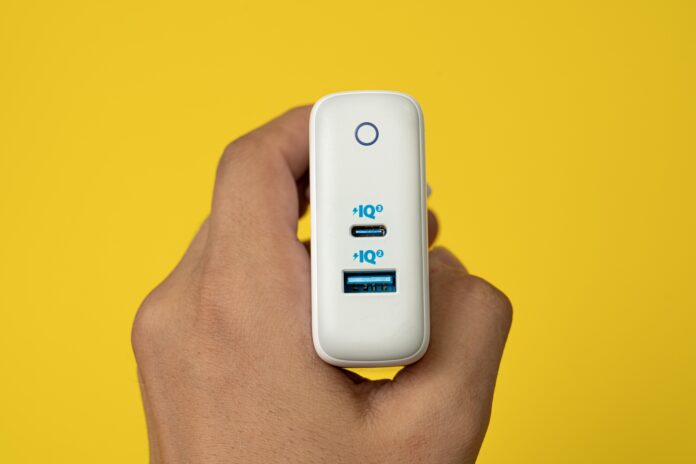USB-C, also known as USB Type-C, is a versatile and increasingly popular interface that has revolutionized the world of connectivity. With its compact form factor, reversible plug orientation, and impressive data transfer speeds, USB-C has become the go-to standard for many modern devices, including laptops, smartphones, tablets, and peripherals. This cutting-edge technology has proven to be a game-changer, offering a range of benefits and capabilities that have simplified the way we connect and transfer data.
USB-C is a successor to the traditional USB (Universal Serial Bus) standards, such as USB-A and USB-B. It was first introduced by the USB Implementers Forum (USB-IF) in 2014 and has gained significant traction since then. The USB-C connector is distinctively small and oval-shaped, featuring a symmetrical design that allows for reversible insertion into compatible ports. This means that there is no longer a “right-side-up” or “upside-down” orientation when plugging in a USB-C cable, making it incredibly convenient for users.
One of the most prominent advantages of USB-C is its incredible versatility. It supports various protocols and interfaces, including USB 3.1, USB 3.2, Thunderbolt 3, DisplayPort, and Power Delivery (PD). This versatility means that a single USB-C port can handle multiple tasks, such as data transfer, video output, and power delivery. It eliminates the need for multiple ports and cables, simplifying the user experience and reducing clutter.
In terms of data transfer speeds, USB-C is a significant improvement over its predecessors. USB 3.1 and USB 3.2 Gen 1 provide data transfer rates of up to 5 Gbps (gigabits per second), which is ten times faster than USB 2.0. USB 3.2 Gen 2 increases this speed to 10 Gbps, while USB 3.2 Gen 2×2 reaches an impressive 20 Gbps. These faster transfer speeds allow for quick and efficient file transfers, making USB-C an excellent choice for users who deal with large data volumes regularly.
USB-C also brings forth the power of Thunderbolt 3, a technology developed by Intel. Thunderbolt 3 utilizes the USB-C port to deliver even higher data transfer rates, reaching up to 40 Gbps. It supports multiple protocols simultaneously, including DisplayPort, PCIe (Peripheral Component Interconnect Express), and USB. Thunderbolt 3 enables users to connect external displays, high-speed storage devices, graphics cards, and other peripherals to their devices using a single USB-C cable. This level of versatility and performance has made Thunderbolt 3 particularly popular in professional environments where high-speed data transfer and video output are critical.
Another noteworthy feature of USB-C is Power Delivery (PD), which allows for fast charging of devices. USB-C PD supports higher power output than previous USB standards, enabling it to charge laptops, tablets, and smartphones. With the right USB-C PD charger, you can charge multiple devices using a single cable, eliminating the need for multiple chargers and adapters. This convenience is especially beneficial for users on the go who need to charge their devices quickly and efficiently.
USB-C has also made significant strides in terms of audio and video capabilities. With the help of DisplayPort Alternate Mode, USB-C can transmit high-definition video and audio signals directly through the port. This means that users can connect their USB-C devices to external monitors, projectors, or TVs without the need for additional adapters or converters. DisplayPort Alternate Mode supports resolutions up to 8K, providing a seamless and high-quality visual experience.
In addition to its technical capabilities, USB-C has gained widespread adoption and support from manufacturers across the industry. It has become the standard port on many laptops, tablets, and smartphones , replacing older USB ports like USB-A and USB-B. The transition to USB-C has been driven by its numerous advantages, including its compact size, versatility, and improved performance.
The compact size of the USB-C connector has played a significant role in its widespread adoption. Its small form factor allows device manufacturers to design thinner and lighter products, making it ideal for ultrabooks, tablets, and smartphones. The reduced size also contributes to the overall aesthetics of the devices, providing a sleek and streamlined appearance. Furthermore, the smaller size of the USB-C connector does not compromise its durability, as it is designed to withstand frequent plug and unplug cycles.
The versatility of USB-C is a key factor in its popularity. With a single USB-C port, users can connect various peripherals and devices. This flexibility eliminates the need for multiple ports on devices, simplifying the user experience and reducing the number of cables and adapters required. USB-C’s ability to support multiple protocols, such as USB, Thunderbolt, DisplayPort, and Power Delivery, ensures compatibility with a wide range of devices, expanding its functionality and usefulness.
USB-C’s improved performance has significantly enhanced data transfer speeds and charging capabilities. With USB 3.1, USB 3.2, and Thunderbolt 3 support, USB-C provides faster data transfer rates, allowing users to move large files and perform backups quickly. The higher power delivery capacity of USB-C PD enables fast charging of devices, including laptops, tablets, and smartphones. This feature is particularly advantageous for professionals and frequent travelers who rely on efficient charging to keep their devices powered throughout the day.
As USB-C continues to gain traction, it has become the standard for connectivity across various industries. It is increasingly found in computer peripherals such as external hard drives, keyboards, mice, and monitors. USB-C is also prevalent in the audio industry, with many headphones and speakers adopting the USB-C interface for charging and data transfer. Additionally, smartphones and tablets from major manufacturers have embraced USB-C as their primary port, ensuring compatibility and interoperability among different devices.
To support the widespread adoption of USB-C, accessory manufacturers have developed a wide range of USB-C cables, adapters, and hubs. These accessories cater to different connectivity needs, enabling users to connect legacy devices with USB-A or HDMI ports to their USB-C devices. USB-C hubs offer additional ports, such as USB-A, HDMI, and Ethernet, providing users with expanded connectivity options. The availability of these accessories further enhances the versatility of USB-C and allows users to leverage its capabilities across various devices and scenarios.
It is important to note that while USB-C offers numerous advantages, it may still require some users to adapt to the new standard. As USB-C becomes more prevalent, older devices and peripherals with incompatible connectors may require adapters or additional cables to connect to USB-C devices. However, the benefits of USB-C’s enhanced performance, versatility, and convenience outweigh the minor inconveniences of transitioning to the new standard.
In conclusion, USB-C has revolutionized connectivity with its compact design, versatility, and improved performance. Its reversible plug orientation, support for multiple protocols, and high-speed data transfer capabilities have made it the go-to standard for modern devices. USB-C’s ability to handle power delivery and video output, along with its compatibility with Thunderbolt 3, has further expanded its usefulness. As USB-C continues to gain widespread adoption, it is set to become the de facto standard for connectivity, simplifying the way we connect, transfer data, and charge our devices.














